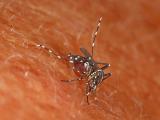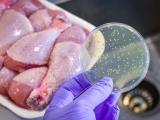Jul 1, 2010
CDC: Serious West Nile virus cases dropped in 2009
The national incidence of the neuroinvasive form of West Nile virus (WNV) infection in 2009 dipped to its lowest level since 2001, the US Centers for Disease Control and Prevention (CDC) reported today. CDC experts reporting in Morbidity and Mortality Weekly Report (MMWR) said the drop in incidence could be due to changes in vectors or hosts, more immunity in avian hosts, increased use of insect repellents, community interventions, reporting practices, or environmental factors such as temperature or rainfall changes. With an incidence of 0.13 per 100,000 population, neuroinvasive WNV dropped for the second year in a row after rates stabilized between 2004 and 2007. The CDC said that of 720 cases of WNV disease reported from 38 states and the District of Columbia, 386 (54%) were the neuroinvasive form, which led to hospitalizations in 95% and 32 deaths. The disease peaked from July through September, consistent with the past decade's pattern. Human WNV disease was seen in all regions of the country, with the highest incidence of neuroinvasive disease in west-central states.
Jul 2 MMWR report
Raw milk from goat farm suspected in Colorado illnesses
Health officials in Colorado have ordered a Longmont goat dairy to stop distributing its raw milk products while authorities investigate 16 illnesses in people who got sick since Jun 10 after drinking the farm's raw milk. Tests have confirmed Campylobacter and Escherichia coli O157 in the patients, according to a statement yesterday from Boulder County Public Health. Two children were hospitalized, and one of them has been released. Health department staff members are contacting households that take part in the farm's "goat share" program to learn whether more illnesses have occurred and to collect milk samples.
Jun 30 Boulder County Public Health press release
Vaccinia virus infection due to sexual contact offers lessons
A recent vaccinia virus infection in a young woman who had sexual contact with a smallpox vaccinee points up the need for awareness and precautions, according to the CDC. The woman sought treatment at an urgent care clinic in February for painful vaginal swellings; she voiced concern that the lesions might have been related to a smallpox shot that her boyfriend, a military man, had recently received, the CDC reported in MMWR. The physician ordered tests for sexually transmitted diseases and prescribed antibiotics. Three days later the woman went to another clinic because of more lesions and pain; this led to a diagnosis of suspected vaccinia infection and testing that confirmed it. The lesions were healing a week later. An epidemiologic investigation revealed that the patient's boyfriend had received a smallpox shot on Feb 15 and had removed the bandage at the vaccination site 5 days later. The couple had unprotected intercourse the same day, and the woman's first lesion appeared 4 days later. The CDC said it is aware of four similar unpublished cases in the past year. The agency said healthcare providers should instruct smallpox vaccinees about ways to present spreading the virus to others, and clinicians should suspect vaccinia virus infections in patients with vesiculopapular rashes and known exposures to recent smallpox vaccinees.
Jul 2 MMWR article


















